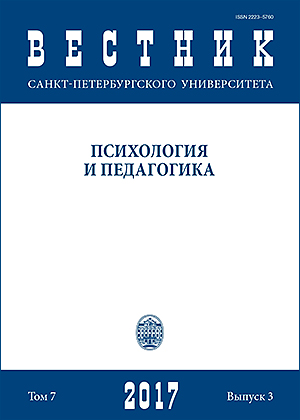Социальные сети как новая среда для междисциплинарных исследований поведения человека
DOI:
https://doi.org/10.21638/11701/spbu16.2017.301Аннотация
Статья содержит описание нового междисциплинарного подхода к сбору индивидуальных психологических, поведенческих и языковых данных в социальных сетях. В описываемой методологии личные данные пользователей социальных сетей (так называемые «цифровые следы», “digital footprints”) собираются с помощью специальных программ и онлайн-приложений. Как правило, участники также заполняют психологические опросники, встроенные в такие приложения. Психологические переменные могут сопоставляться с указанной доступной информацией о поведении пользователей в социальной сети. Все эти данные, получаемые на многотысячных выборках, могут не только анализироваться с помощью классических статистических методов, но и использоваться для построения предсказательных моделей с помощью алгоритмов машинного обучения. Таким образом, психологические переменные (например, личностные особенности, уровень субъективного благополучия и др.) и социально-демографические характеристики могут предсказываться только на основе открытых данных пользователей социальных сетей — текстов, подписок на сообщества и т.п., что является совершенно новым способом получения информации о респондентах. В таких исследованиях, как правило, участвуют психологи, веб-программисты, а также специалисты по компьютерной лингвистике, анализу данных и машинному обучению. Обсуждаются преимущества и ограничения этой методологии, описаны конкретные подходы к сбору и обработке данных. Представлены некоторые результаты работы пионеров этого направления исследований — участников британского (“Mypersonality.org”) и американского (“World Well-Being Project”) проектов, наиболее масштабно использующих рассматриваемый подход.
Ключевые слова:
социальные сети, Фейсбук, интернет-исследования, сбор данных, цифровые следы, личностные особенности, предсказательные модели, компьютерная лингвистика, междисциплинарный подход
Скачивания
Библиографические ссылки
References
Загрузки
Опубликован
Как цитировать
Выпуск
Раздел
Лицензия
Статьи журнала «Вестник Санкт-Петербургского университета. Психология» находятся в открытом доступе и распространяются в соответствии с условиями Лицензионного Договора с Санкт-Петербургским государственным университетом, который бесплатно предоставляет авторам неограниченное распространение и самостоятельное архивирование.





